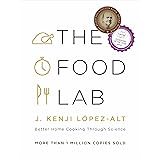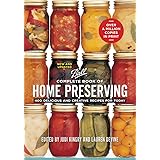Learning about the world around us is an exciting journey, especially for young minds. From the vibrant colors of fruits to the unique shapes of various vegetables, every new word opens up a universe of understanding. The video above provides a fantastic starting point, introducing many essential vegetable names in English and Hindi, making it a valuable resource for children and adults alike who are beginning their bilingual vocabulary adventure.
Understanding the names of these everyday items in multiple languages is more than just memorization; it’s about building foundational knowledge for healthy eating habits and fostering cognitive development. While the video quickly runs through a comprehensive list, this article aims to expand on that knowledge, diving deeper into the importance and benefits of these nutritional powerhouses. Moreover, we will explore why knowing these terms in both English and Hindi can enrich culinary experiences and everyday communication.
Expanding Your English and Hindi Vegetable Vocabulary
The journey of learning a new language, or even just expanding your vocabulary in one, can be incredibly rewarding. When it comes to everyday essentials like vegetables, having a strong grasp of their names in both English and Hindi not only helps in the kitchen but also in understanding cultural contexts. For instance, knowing ‘sarson ke patte’ for green mustard greens is crucial for appreciating North Indian cuisine, whereas ‘palak’ for spinach is fundamental across many Indian dishes.
Each vegetable featured in the video, from the humble potato (aloo) to the exotic spine gourd (kakoda), plays a significant role in global and local diets. While some vegetables like carrots (gajar) and onions (pyaz) are universal staples, others like pointed gourd (parwal) or taro root (arbi) might be more specific to certain regions, particularly in South Asia. This linguistic bridge helps connect learners to the vast world of fresh produce and its cultural significance.
The Nutritional Powerhouses: Benefits of Common Vegetables
Beyond just learning their names, understanding the health benefits of these vegetables can inspire healthier eating choices. Every vegetable on the list brings its unique set of vitamins, minerals, and antioxidants to the table, contributing significantly to overall well-being. For example, leafy greens like spinach (palak) and fenugreek (hari methi) are renowned for their iron content, vital for blood health and energy levels.
Studies show that a diet rich in vegetables can reduce the risk of chronic diseases. The World Health Organization recommends consuming at least 400g (five portions) of fruits and vegetables per day to prevent illnesses such as heart disease, stroke, and certain cancers. Meanwhile, beetroot (chukandar) is known for boosting stamina and lowering blood pressure, while carrots (gajar) are famous for their beta-carotene, which is essential for good vision.
Consider the mighty broccoli, a cruciferous vegetable packed with Vitamin C and K. While the video identifies ‘broccoli’ as ‘broccoli’ in Hindi, its nutritional impact is far-reaching, aiding in immune function and bone health. Similarly, bitter gourd (karela), though sometimes challenging for its taste, is celebrated in traditional medicine for its potential role in managing blood sugar levels, a fact supported by various nutritional studies.
Why Bilingual Learning is a Smart Move for Young Learners
Learning vegetable names in English and Hindi, as presented in the video, offers profound cognitive advantages for children. Bilingual education has been linked to improved problem-solving skills, enhanced creativity, and better multitasking abilities. Children who learn multiple languages often demonstrate greater cognitive flexibility, making it easier for them to switch between tasks and perspectives.
Moreover, introducing vocabulary in two languages from a young age helps build stronger linguistic foundations. Research indicates that early exposure to multiple languages can positively impact brain development, improving memory and attention spans. This dual-language approach not only equips children with practical communication skills but also broadens their cultural understanding and global perspective from an early age.
The simple act of learning ‘tomato’ as ‘tamatar’ or ‘onion’ as ‘pyaz’ creates neural pathways that support future language acquisition. Whereas a monolingual learner might only process the sound and meaning in one language, a bilingual learner is constantly making connections between two sets of linguistic representations. This process inherently makes their brains more adaptable and efficient at language processing.
Integrating Vegetables into Everyday Life and Learning
Incorporating these newly learned vegetable names into daily activities can make the learning process more engaging and effective. Parents and educators can use visual aids, real vegetables, or even cooking activities to reinforce the vocabulary. For instance, when preparing a meal, asking “Can you hand me the ‘gajar’ (carrot)?” or “Let’s chop the ‘shimla mirch’ (capsicum)!” can turn a chore into a fun learning opportunity.
Many of these vegetables are staples in Indian households, offering a direct link between language learning and cultural immersion. Jackfruit (katahal), for example, is often used in curries and can be a fascinating vegetable to discuss, given its unique texture and size. Similarly, the diverse varieties of gourds like bottle gourd (lauki), sponge gourd (gilki), and round gourd (tinda) highlight the richness of Indian culinary traditions.
Expanding on the basic naming, one could explore how these vegetables are used in different recipes. For example, ‘hari mirch’ (green chilli) and ‘lal mirch’ (red chilli) are fundamental spices, while ‘adrak’ (ginger) and ‘lahsun’ (garlic) form the aromatic base of countless dishes. Understanding their roles in cooking reinforces their names and adds practical context, making the learning more meaningful and memorable for children.











